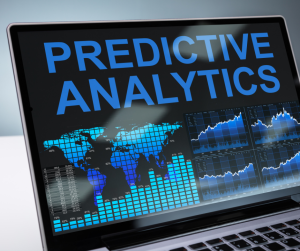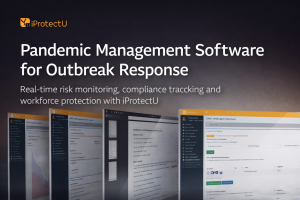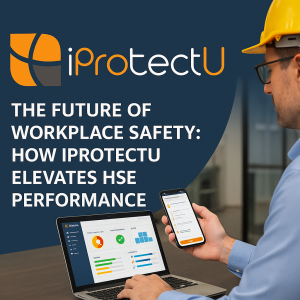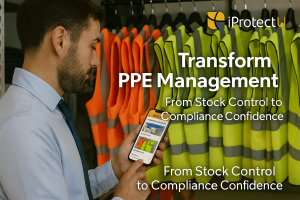A Look at the Statistics
In 2022/23, fifty workers in the UK died due to a fall from height. There was a total of 138 work-related fatalities for the year. During the same period, 561,000 workers sustained a workplace non-fatal injury, according to the Labour Force Survey, a large-scale national household survey run by the Office for National Statistics (ONS). Of these, 96,000 were due to a slip, trip or fall on the same level; 26,000 were due to a fall from height.
32 per cent of non-fatal work-related injuries reported by employers under RIDDOR in 2022/2023 were due to a slip, trip or fall on the same level.
It is evident that the rate of falls remains high. This led us to look at the main causes of such injuries; the precautions employers and employees can take; and whether new technology can be implemented to bring these figures down.
Main Causes of Slips, Trips and Falls at Work
Slips
- Wet or slippery floors, commonly due to spills, rain, cleaning, etc.
- Loose floor coverings, for example, mats and rugs that shift.
- Improper lighting.
- Unsuitable footwear, for example slippery soles or lack of traction.
- Uneven surfaces, such as potholes, depressions, or raised areas.
- Icy conditions in outside areas.
Trips
- Obstructions in the workplace such as cords, boxes, tools, or equipment.
- Loose objects that can shift underfoot.
- Uneven surfaces i.e. change in elevation or steps.
- Poor housekeeping, resulting in cluttered or unorganised areas.
Falls
- The absence of handrails on stairs or elevated platforms.
- Inadequate guardrails around open areas or edges.
- Unsafe ladders, due to improper use or maintenance.
- Unmarked or sudden changes in elevation.
- Medical conditions that impair balance contribute to the risk of falls, such as vertigo.
- Distractions, for example, mobile phones or loud noises.
Precautions to Prevent Slips, Trips, and Falls
What can Employers do?
- Complete a risk assessment! iProtectU can help. Check out our easy-to-use Risk Assessment Software.
- Conduct regular workplace inspections. Check for hazards such as spills, obstructions, and poor lighting.
- Maintain proper housekeeping; work areas should be kept clean and organised.
- Consider non-slip flooring. Appropriate materials should be used in areas prone to spills or moisture.
- Ensure adequate lighting and illumination in all areas.
- Use hazard warning signs where necessary to mark potential dangers.
- Educate employees on safe work practices and hazard identification. Health and safety training is crucial. Check out the iProtectU Learning and Development Software.
What can Employees do?
- Noticed a hazard or unsafe condition? Report this to your supervisor so they can handle it.
- Follow company safety procedures and protocols.
- If applicable, use safety equipment and gear provided, such as harnesses or helmets.
- Wear appropriate footwear at all times. Choose non-slip shoes with good traction.
- Be aware of your surroundings. Pay attention to the potential hazards around you.
- Avoid distractions while you are working, such as using your mobile phone.
New Technology is constantly Emerging
- Robots can handle routine cleaning tasks, such as mopping and sweeping, more efficiently and consistently, reducing the risk of slip and fall accidents.
- Smart footwear can provide real-time feedback on stability and traction, prompting workers to adjust their movements to avoid slips.
- Smart floor sensors which detect changes in surface conditions (e.g., spills, debris) and send alerts to employees or cleaning staff.
- Wearable fall detection devices can monitor worker movements and detect falls. These devices automatically trigger an alert.
- Personalised safety training can be tailored to individual workers’ needs and experiences.
- Augmented Reality (AR) safety glasses can overlay safety information onto the real-world environment, highlighting potential hazards or providing instructions regarding safe procedures.
- Predictive analytics can identify potential slip, trip, and fall hazards before they occur. This is done by analsing data from cameras, sensors, and other sources.
- Self-healing floor coatings can automatically repair minor floor damage, such as cracks or chips.
- Biometric monitoring sensors can monitor workers’ physiological parameters (e.g., balance, heart rate) to detect signs of fatigue or stress which could contribute to accidents.
- AI-powered hazard detection systems can analyse video footage from surveillance cameras to identify hazards, such as obstructions, spills, or uneven surfaces.
These are Accidents that don’t need to Happen
The Health and Safety Executive’s (HSE UK) current ten-year strategy focuses on “tackling both new and traditional risk, at the right time and in the right way”.
As the rate of slip, trip and fall incidents remains high, we clearly need to tackle traditional risk factors in new ways.
To put it simply, these are accidents that don’t need to happen.









